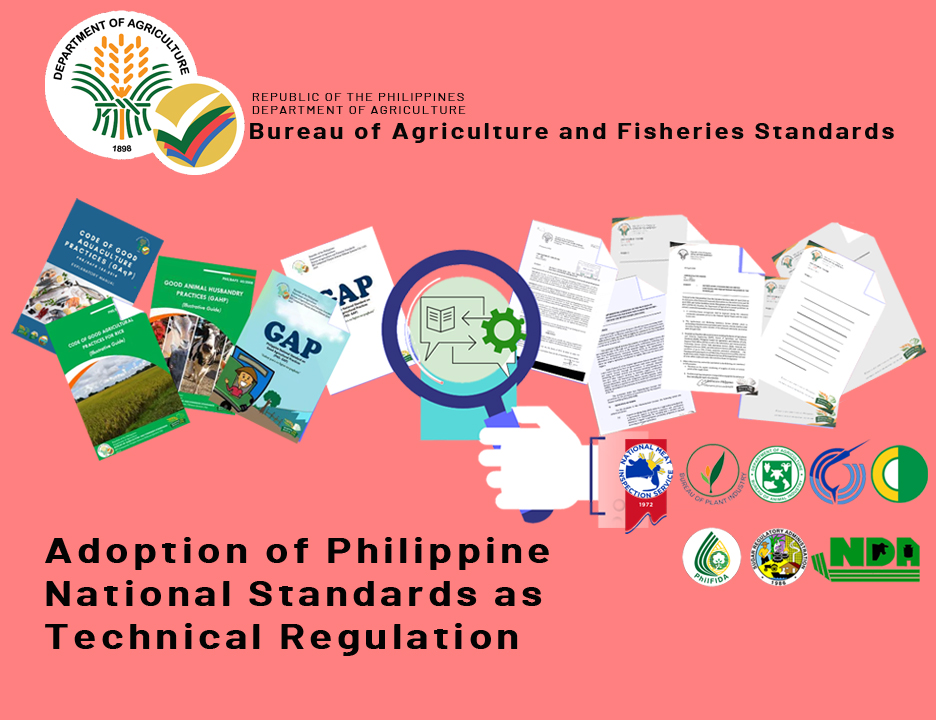
February 24, 2022. 75% or 40 out of the 53 Philippine National Standards (PNS) adopted as the basis of technical regulations are on food safety, as results of the two-part survey conducted by the Bureau of Agriculture and Fisheries Standards (BAFS) in 2021 indicate. The remaining 13 standards, or 25%, are quality-related. The 53 PNS accounts for 17% of the 317 total PNS developed by the Bureau.
The 40 adopted standards are equivalent to 29% of the 139 food safety-related PNS. In comparison, the 13 PNS accounts for 7% adoption of the 178 quality-related standards. The survey also showed that most of the standards, or 50 PNS, were done from 2015 to 2020. The remaining three were from 2003 to 2014.
The high adoption of food safety-related standards compared to quality standards can be attributed to Republic Act 10611 or the Food Safety Act (FSA) of 2013. The FSA mandates the DA regulatory agency to adopt food safety-related PNS as the basis of the technical regulations. When a PNS exists, regulatory agencies should adopt the PNS, or parts of it, as the basis for their technical regulations.
Among the agencies surveyed, the BPI has adopted the most significant number of PNS, 20 PNS, as the basis of their technical regulations. BAI follows this with 9 PNS, BFAR, and BAFS with 7 PNS, PCA with 3 PNS, SRA, NDA, and, PhilFIDA with 2 PNS and BAFE, NMIS, and FPA with 1 PNS each.
BPI adopted PNS on Maximum Residue Limits (MRLs) of pesticides for crops such as okra, asparagus, pineapple, mango, banana, and rice through BPI Administrative Circular No. 02 Series 2020. Compliance with the MRLs set helps enhance the country’s agricultural trade and competitiveness and promotes consumer protection against harmful effects of agrochemicals.
The monitoring of standards adoption is an after-standards development process. The results of the monitoring activity will be one of the inputs to improve the Bureau’s standards promotion strategies further. ###
